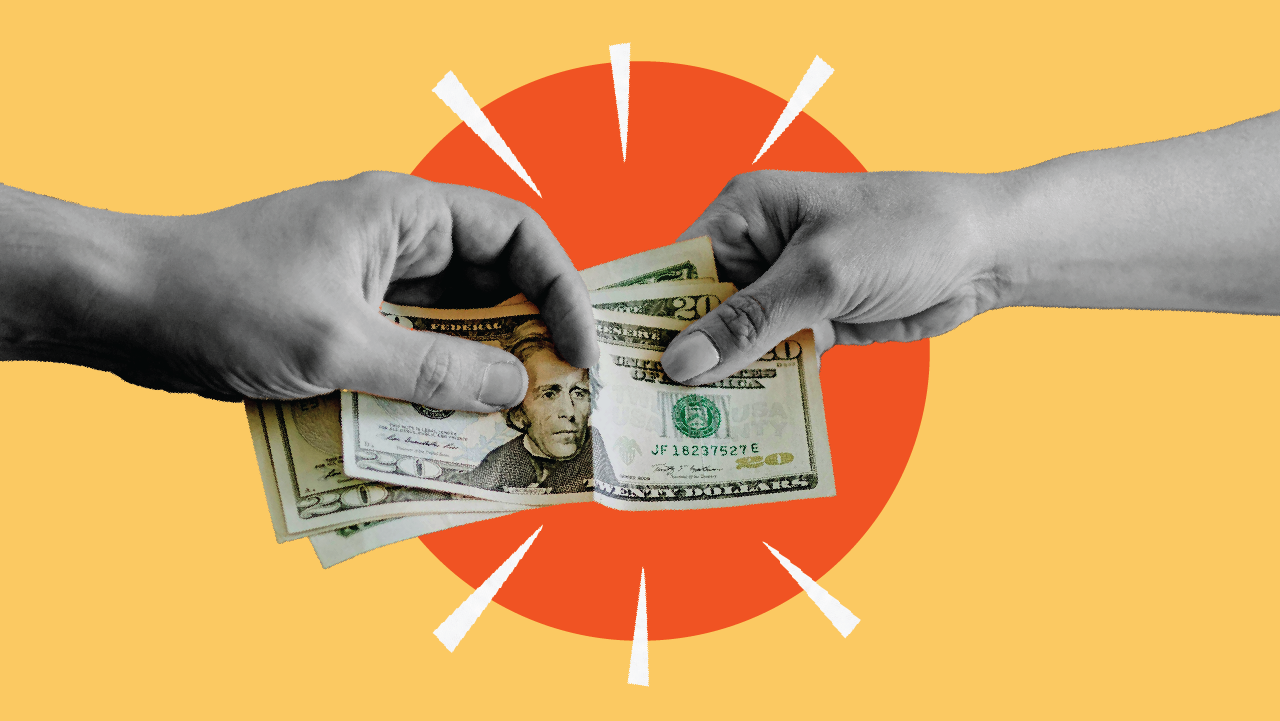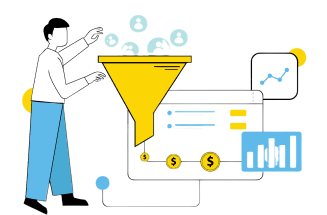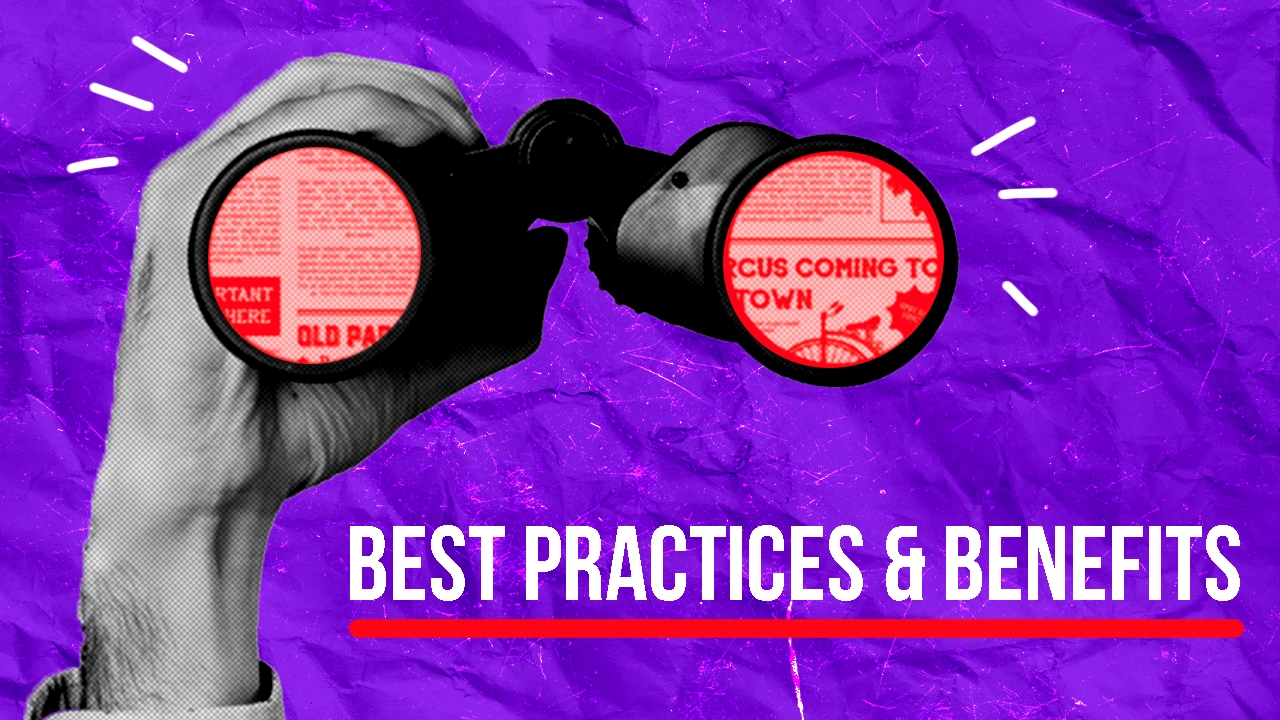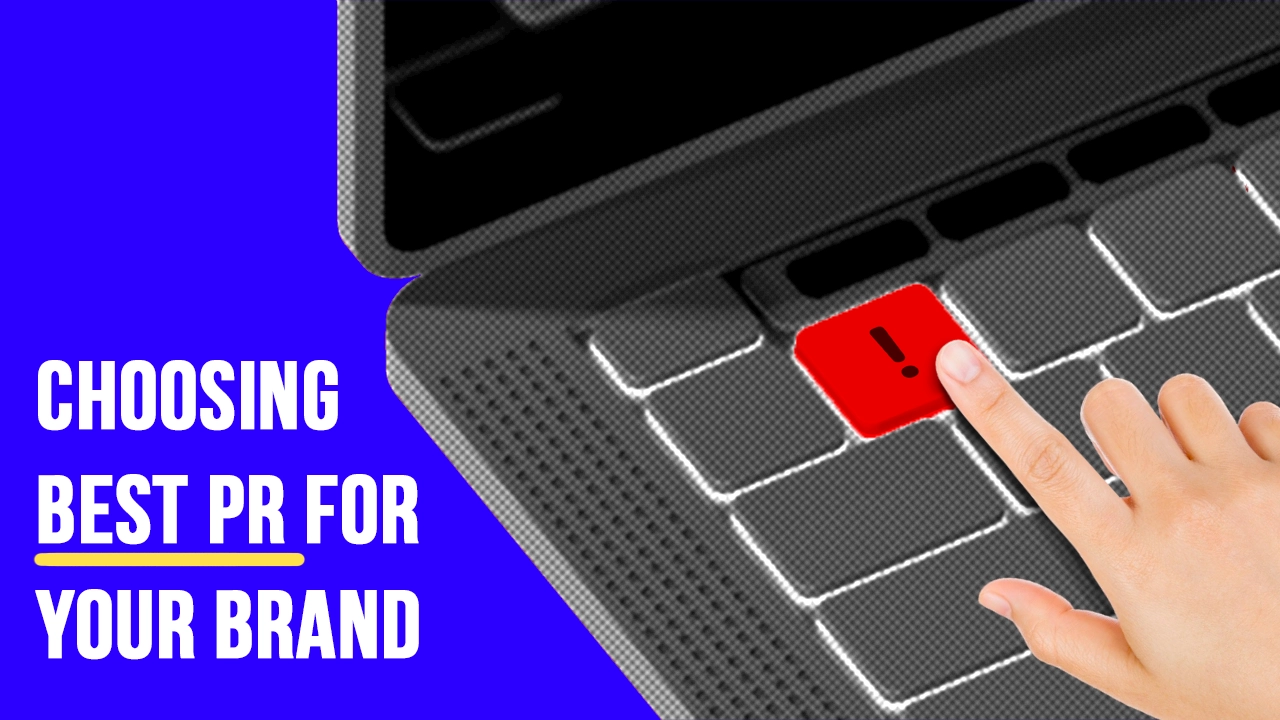The rise of digital advertising has transformed how e-commerce brands market their products. However, this transformation has brought challenges—primarily skyrocketing ad costs. For small and medium-sized e-commerce brands, managing these expenses while maintaining profitability has become increasingly difficult. Paid advertising often leads to diminishing returns, creating a need for alternative strategies.
Press releases, a cornerstone of public relations (PR), provide an effective and cost-efficient solution to this problem. They offer brands a way to generate buzz, gain visibility, and drive organic traffic without incurring the recurring costs of paid campaigns. This article explores how press releases can help e-commerce brands solve the high ad spend problem, with actionable insights for implementation.
Key Takeaways:
- Press releases generate earned media—a credible and cost-effective alternative to paid advertising.
- They build long-term visibility through media coverage, driving traffic even after the initial release.
- Press releases foster trust and credibility by positioning brands as authentic and authoritative.
- They complement other marketing strategies like SEO, content marketing, and social media to amplify results.
- Measurable metrics like media mentions and referral traffic demonstrate their impact on business growth.
Need professional press release services? Contact GlobalWavePR today to amplify your e-commerce brand with results-driven PR strategies!
Table of Contents
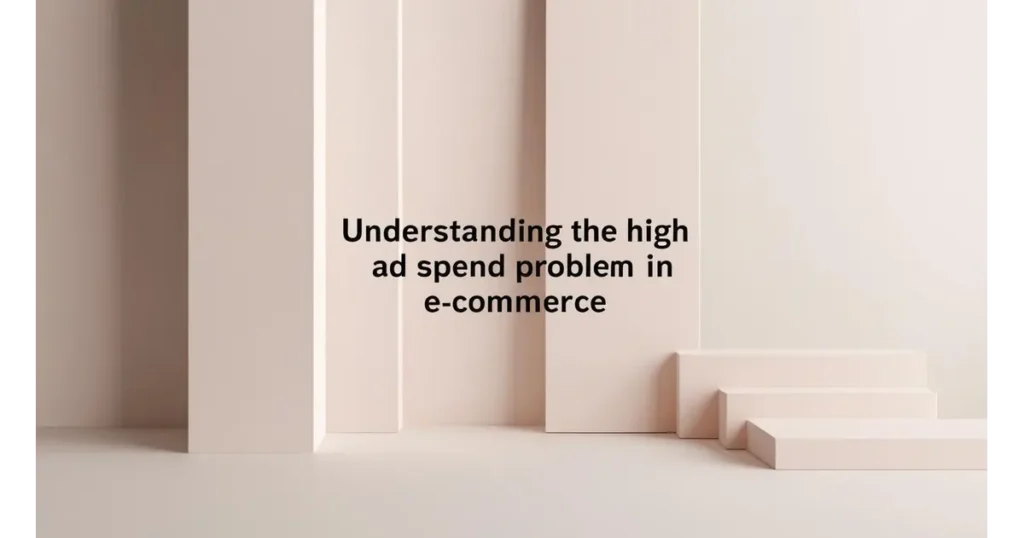
Understanding the High Ad Spend Problem in E-commerce
The Costly Reality of Digital Advertising
E-commerce brands face a growing challenge in the digital marketing landscape: the escalating cost of paid advertising. Platforms like Google Ads, Meta Ads (Facebook and Instagram), and TikTok Ads are integral to driving traffic and sales, but they operate on auction-based systems where competition dictates pricing. As more brands enter the e-commerce space, the cost-per-click (CPC) and cost-per-thousand-impressions (CPM) have surged.
Key Statistics:
- Google Ads’ CPC has risen by over 20% in the past five years, with some competitive niches seeing increases of 50%.
- Meta’s CPM nearly doubled from 2018 to 2023, reflecting increased demand for ad space.
- Small and medium-sized businesses are spending up to 30% of their marketing budgets on ads, leaving little room for experimentation with other strategies.
- These rising costs create a significant financial strain, particularly for smaller e-commerce brands competing against established players with larger budgets.
The Diminishing Returns on Ad Spend
Paid advertising is designed to generate quick results, but its efficiency often declines over time. As costs rise, the revenue generated from ads may fail to justify the investment. This is a classic case of diminishing returns, where increasing ad spend yields progressively lower ROAS (Return on Ad Spend).
For example:
• A brand spending $10,000 monthly on ads might see strong initial sales, but over time, customer acquisition costs (CAC) rise due to ad saturation and increased competition. This can erode profit margins and limit scalability.
Consumer Fatigue and Ad Distrust
Another critical challenge is ad fatigue—consumers growing weary of repetitive advertisements. This phenomenon affects engagement rates and click-through rates (CTR), reducing the overall effectiveness of ad campaigns. Studies show:
- Over 70% of consumers actively avoid clicking on ads, citing reasons such as irrelevance, overexposure, or distrust.
- Ad blockers are increasingly popular, with over 40% of internet users employing tools to remove paid ads from their browsing experience.
- Consumers now prefer authentic, trustworthy content over blatant promotional messages. This shift has made earned media—such as press releases and organic mentions—a more effective strategy for building brand awareness and driving traffic.
The Need for an Alternative Solution
Faced with these challenges, e-commerce brands must explore alternatives to paid advertising that are:
- Cost-Effective: Solutions that don’t require constant financial input.
- Long-Lasting: Strategies that yield sustained visibility over time.
- Credible: Tactics that align with changing consumer preferences for authentic and trustworthy content.
This is where press releases come into play. A well-executed press release strategy allows brands to share their story, build credibility, and generate organic media coverage—all without the recurring costs of paid ads.
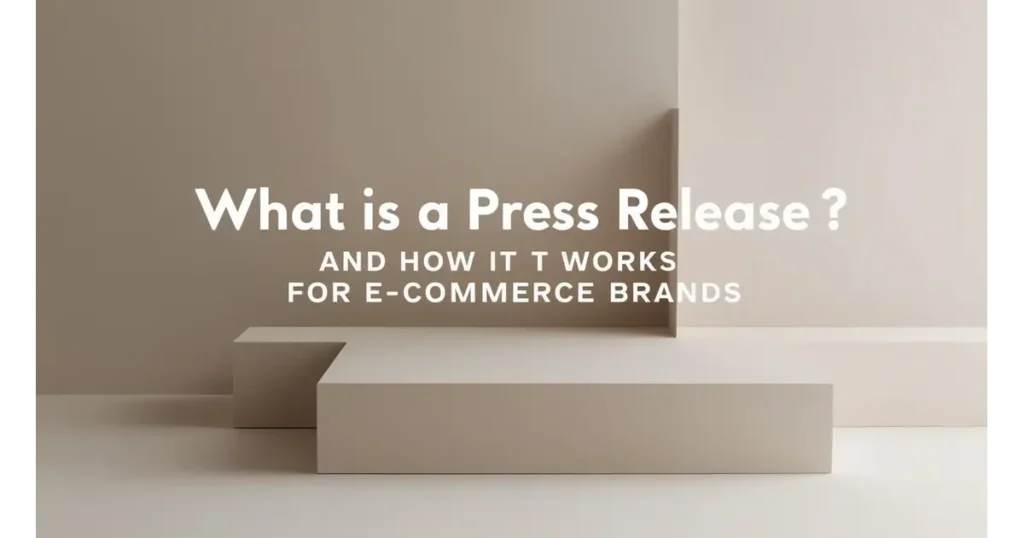
What is a Press Release and How It Works for E-commerce Brands
What is a Press Release?
A press release is a concise, professionally crafted statement issued by a business to share newsworthy updates with the media. It serves as a communication tool that informs journalists, bloggers, and influencers about a brand’s latest developments, such as:
- Product launches.
- Seasonal promotions.
- Company milestones.
- Partnership announcements.
For e-commerce brands, press releases are a cost-effective way to attract attention, generate buzz, and secure media coverage. Unlike paid ads, press releases rely on earned media—publicity gained through third-party validation, which consumers perceive as more credible and trustworthy.
Start building credibility and driving organic traffic with expertly crafted press releases. Learn more about GlobalWavePR’s services here.
The Importance of Press Releases in E-commerce
Press releases play a vital role in addressing the high ad spend problem for e-commerce brands. Here’s how:
- Cost-Effective Media Exposure
- A single well-distributed press release can secure mentions in multiple media outlets, blogs, and online publications. These earned media placements drive organic traffic and build brand awareness without the recurring costs of paid ads.
- Building Credibility and Trust
- Unlike paid ads, which are often viewed skeptically, press releases rely on unbiased, third-party validation. Media outlets covering your brand lend credibility and authority to your message, increasing consumer trust.
- Generating Long-Term Impact
- Paid ads only drive traffic as long as the campaign runs, but a press release featured on reputable websites or blogs can continue to generate visibility and referral traffic for months—or even years—after its initial publication.
- Enhancing SEO Performance
- When a press release is published on a media outlet or shared online, it often includes backlinks to the brand’s website. These high-quality backlinks boost search engine rankings, increasing the visibility of your e-commerce site and driving organic traffic.
The Structure of an Effective Press Release
To maximize the impact of your press release, ensure it includes the following elements:
- Headline: A compelling title that grabs attention and summarizes the news.
- Subheading: A brief sentence providing additional context.
- Lead Paragraph: A concise summary answering the key questions: Who, What, When, Where, Why, and How.
- Body: The main content, detailing the announcement and its significance.
- Quotes: Statements from company leaders, partners, or customers to add authenticity and depth.
- Call to Action (CTA): Direct readers to your website, product page, or event for more details.
- Media Contact Information: Include contact details for follow-up inquiries from journalists.
Examples of Press Releases in E-commerce
- Product Launch:
- An e-commerce brand introducing a new product can issue a press release highlighting its unique features, availability, and benefits. For instance, a skincare brand might emphasize the science behind its new anti-aging serum, attracting coverage in health and beauty blogs.
- Seasonal Promotions:
- A press release announcing a holiday sale or Black Friday event can attract attention from shoppers and media outlets. By framing the promotion as newsworthy, brands can generate excitement and drive traffic.
- Milestone Achievements:
- Celebrating anniversaries, awards, or revenue milestones through press releases positions your brand as successful and credible, enhancing customer trust.
How Press Releases Solve the High Ad Spend Problem
Unlike paid ads, press releases are a one-time investment that delivers ongoing results. When crafted strategically, they:
- Drive organic traffic through media coverage and backlinks.
- Build trust by securing third-party validation.
- Enhance SEO performance, reducing the need for paid search campaigns.
- Foster long-term visibility and brand recognition.
Press releases, when integrated with a broader marketing strategy, offer a sustainable solution to the high ad spend problem in e-commerce.
How Press Releases Benefit E-commerce Brands
- Generate Credible Media Coverage:
- Press releases enable brands to share their story with journalists, bloggers, and influencers. When picked up by reputable media outlets, the coverage enhances the brand’s credibility.
- Drive Organic Traffic:
- Media coverage often includes backlinks to the brand’s website, which drives organic traffic and boosts SEO rankings.
- Cost-Effective Visibility:
- Unlike paid ads, a well-crafted press release can generate long-term benefits without recurring costs.
- Build Trust with Consumers:
- Press releases rely on earned media, which consumers perceive as unbiased and trustworthy compared to paid promotions.
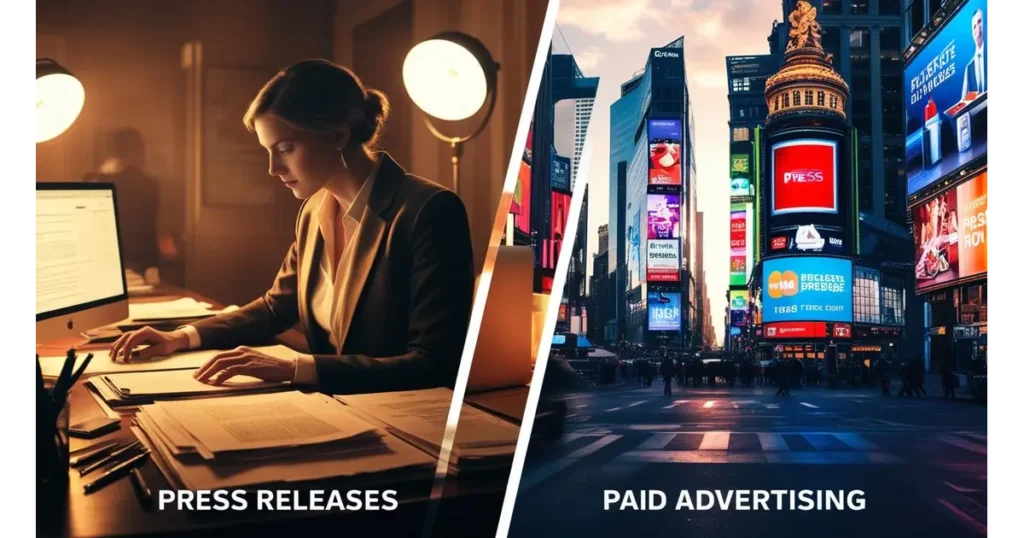
Press Releases vs. Paid Advertising: A Cost-Effectiveness Comparison
The Cost Dynamic: Press Releases vs. Ads
One of the most significant advantages of press releases over paid advertising is their cost structure. Paid ads require ongoing investment, with costs that increase over time due to rising competition. For instance:
- Google Ads: Requires a consistent budget to maintain visibility, with CPCs climbing as more brands bid on the same keywords.
- Social Media Ads: CPM rates on platforms like Meta and TikTok can fluctuate seasonally, leading to unpredictable expenses.
Press releases, on the other hand, are a one-time expense. The cost of creating and distributing a press release—whether through a distribution service or direct outreach—is often far lower than the monthly expense of a digital ad campaign. Moreover, the returns from a press release can last for months or years, far outpacing the temporary boost offered by paid ads.
Credibility and Trust: Earned Media vs. Paid Promotions
Consumers increasingly distrust paid advertisements, viewing them as biased and self-serving. In contrast:
- A press release, when picked up by a reputable publication, carries the authority of the media outlet, lending credibility to the brand.
- Press releases rely on earned media—coverage that is perceived as authentic and unbiased—making it more likely to resonate with audiences.
For example, a feature in a respected industry blog based on a press release can drive significantly higher engagement than a paid ad, as readers view the article as an endorsement rather than a sales pitch.
Long-Term vs. Short-Term Results
Press releases offer sustained value, while paid ads are inherently short-lived:
- Paid Advertising: Visibility ends the moment the campaign stops. While ads can drive immediate traffic, they often fail to deliver long-term impact.
- Press Releases: Once published, press releases remain accessible on media outlets and online platforms. They continue to generate traffic, backlinks, and visibility long after their initial release.
For instance:
• A press release about a product launch that secures coverage on a major news site will drive traffic for months, unlike an ad campaign that ceases to deliver results once the budget is exhausted.
Engagement and Emotional Impact
Press releases excel at storytelling, allowing brands to connect emotionally with their audience. Paid ads, while effective for direct calls to action, often fail to establish the deeper connections that foster loyalty and trust. A press release can:
- Showcase a brand’s values, mission, and unique selling points.
- Build relationships with consumers through authentic narratives that resonate.
Aspect Press Releases Paid Advertising
- Cost One-time investment High, recurring expense
- Longevity Long-term visibility Ends when budget runs out
- Credibility Earned media perceived as unbiased Often seen as self-serving
- SEO Impact Boosts organic rankings through backlinks Minimal SEO benefit
- Trust Builds consumer trust Less effective at fostering trust
Press releases are not just an alternative to ads—they are a complement, offering a cost-efficient way to amplify your brand’s reach while building lasting relationships with consumers.

How E-commerce Brands Use Press Releases to Solve High Ad Spend Problems
E-commerce brands can use press releases strategically to address rising advertising costs and achieve their marketing goals. Below are specific use cases demonstrating the effectiveness of press releases in reducing ad spend and driving organic growth.
1. Announcing Product Launches
A press release is an ideal tool for spreading the word about a new product or service. By sharing the unique features, benefits, and availability of the product, brands can attract media attention and drive early adoption.
Example:
A tech e-commerce brand launching a new smartwatch issued a press release highlighting its advanced features, compatibility with other devices, and competitive pricing. The release was picked up by major tech blogs and online publications, generating:
• 150,000 impressions within two weeks.
• $120,000 in pre-orders—all without spending a dime on paid ads.
2. Promoting Seasonal Discounts
Press releases can help brands stand out during competitive shopping seasons like Black Friday, Cyber Monday, or holiday sales. By framing the discount as a newsworthy event, brands can generate excitement among both consumers and the media.
Example:
A sustainable fashion retailer issued a press release about its “Green Friday” sale, emphasizing eco-friendly discounts and partnerships with charities. The story was covered by several lifestyle blogs, driving:
• A 30% increase in website traffic.
• A 20% rise in sales compared to the previous year.
3. Highlighting Milestones and Achievements
Whether it’s celebrating an anniversary, achieving a revenue milestone, or winning an award, press releases are a great way to showcase your brand’s progress and build trust with your audience.
Example:
An e-commerce startup celebrating its third anniversary issued a press release announcing its growth statistics and thanking customers for their support. The release was featured in local newspapers and business blogs, resulting in:
• A 25% increase in direct traffic.
• Positive brand sentiment, reflected in higher engagement on social media.
4. Partnering with Influencers or Organizations
E-commerce brands can issue press releases to announce collaborations with influencers, celebrities, or other companies. These partnerships can elevate brand awareness and credibility while reducing reliance on paid campaigns.
Example:
A skincare brand partnered with a popular beauty influencer and issued a press release to announce the collaboration. Media outlets covered the story, which led to:
• A significant boost in brand searches on Google.
• A surge in organic traffic and product sales, without the need for paid ads.
5. Supporting Social and Environmental Causes
Consumers increasingly prefer brands that align with their values. Press releases highlighting a brand’s involvement in social or environmental initiatives can resonate deeply with audiences, generating organic media coverage.
Example:
An outdoor gear retailer issued a press release about its efforts to plant one million trees in collaboration with a non-profit. The release was featured in environmental blogs and news outlets, leading to:
• A 40% increase in organic traffic over three months.
• New customer acquisitions driven by the brand’s commitment to sustainability.
Key Takeaway
By strategically leveraging press releases, e-commerce brands can effectively address high advertising costs, drive organic traffic, and build credibility. These examples highlight how press releases offer tangible, measurable results while fostering long-term growth.
Integrating Press Releases with Other Marketing Strategies
Press releases are most effective when combined with complementary marketing strategies. By integrating press releases into your broader marketing efforts, you can amplify their impact and drive even greater results. Here’s how e-commerce brands can create synergy between press releases and other channels.
1. Boosting SEO with Press Releases
Press releases are a powerful tool for improving your website’s search engine rankings. Here’s how they contribute to SEO:
- Backlink Generation: Media outlets often include links to your website when publishing stories based on your press release. These high-quality backlinks enhance your site’s domain authority and improve search rankings.
- Keyword Optimization: Incorporating targeted keywords in press releases ensures they rank well on search engines, driving organic traffic.
- Content Discoverability: Press releases published on reputable platforms often rank highly on Google, increasing the visibility of your brand for related searches.
Example:
A press release for a new fitness product secured backlinks from five high-traffic fitness blogs, boosting the brand’s website ranking for “best home workout equipment.”
2. Enhancing Content Marketing Efforts
Press releases can provide the foundation for long-form content, such as blog posts, videos, or podcasts. By repurposing press release content, brands can reinforce their message across multiple formats and reach diverse audiences.
Example Uses:
- Blog Posts: Expand on the details of a press release in a more conversational format.
- Social Media Content: Share snippets from the press release on platforms like Instagram, LinkedIn, and Twitter.
- Email Newsletters: Highlight press releases in customer email campaigns to keep your audience informed.
Example:
A press release announcing an eco-friendly product launch was repurposed into a blog post titled “5 Ways to Make Your Home More Sustainable.” The post attracted significant organic traffic and generated additional sales.
3. Amplifying Social Media Reach
Social media is a great channel for promoting press releases and engaging with your audience. By sharing media coverage generated by your press release, you can build excitement and foster interactions.
Tips for Social Media Amplification:
- Share links to press release coverage with captions that encourage followers to click through.
- Use social media ads to promote major press releases, targeting specific audience segments.
- Tag media outlets or influencers mentioned in the press release to extend your reach.
Example:
A press release about a partnership with a celebrity chef was shared across Instagram and Twitter, resulting in a 25% increase in engagement and a surge in website traffic.
4. Strengthening PR with Influencer Marketing
Pairing press releases with influencer collaborations amplifies your brand’s reach and credibility. For example:
- Issue a press release announcing a partnership with an influencer.
- Work with the influencer to promote the same story on their channels, creating a consistent narrative across platforms.
Example:
An e-commerce fashion brand issued a press release about its collaboration with a well-known fashion influencer. The influencer shared the story on their social media, leading to significant media pickup and a 40% boost in traffic.
5. Supporting Paid Advertising Campaigns
While press releases can reduce reliance on paid ads, they also complement ad campaigns. For example:
- Use press release coverage as social proof in ad copy.
- Promote press release articles in display ads to build authority and trust.
Example:
An e-commerce electronics brand used excerpts from a press release featured in a top tech blog in its Facebook ad campaigns. The strategy increased ad engagement by 35%.
Key Takeaway
Integrating press releases with SEO, content marketing, social media, influencer marketing, and paid ads creates a holistic marketing strategy that amplifies results. By leveraging press releases as the backbone of your campaigns, you can drive organic traffic, build credibility, and boost engagement across channels.
Your story deserves the spotlight. Explore how GlobalWavePR can help you craft impactful press releases tailored to your brand’s goals.
Measuring the Success of Press Releases
Tracking the performance of press releases is essential to demonstrate their value and refine your strategy. While measuring press release success can be more nuanced than evaluating paid ads, there are clear metrics and tools to help quantify their impact.
1. Key Metrics to Evaluate Success
Media Mentions
- What to Track: The number of times your press release is featured in media outlets, blogs, or social platforms.
- Why It Matters: Media mentions expand your reach and enhance brand authority.
Referral Traffic
- What to Track: Website visitors driven by press release coverage.
- Why It Matters: Measures how well the press release directs potential customers to your site.
- How to Measure: Use Google Analytics to track referral sources from media sites.
Backlinks
- What to Track: The number and quality of backlinks earned from press release coverage.
- Why It Matters: Backlinks improve SEO performance and drive organic traffic.
- How to Measure: Tools like Ahrefs or SEMrush can analyze backlinks and their impact on domain authority.
Engagement Metrics
- What to Track: Social shares, likes, comments, and click-through rates on links to your press release.
- Why It Matters: Engagement shows how well the press release resonates with your audience.
Sales and Conversions
- What to Track: Revenue generated directly or indirectly from press release-driven traffic.
- Why It Matters: Demonstrates the press release’s impact on your bottom line.
- How to Measure: Use UTM parameters to attribute sales to specific press releases.
2. Tools to Track and Analyze Press Release Performance
- Google Analytics: Track referral traffic and conversions from press release campaigns.
- Cision or Meltwater: Monitor media mentions and evaluate coverage reach.
- SEMrush or Ahrefs: Analyze backlinks and their contribution to your website’s SEO performance.
- BuzzSumo: Measure the social reach and engagement of your press release.
3. Real-World Example of Tracking Success
Scenario:
An e-commerce skincare brand issued a press release about its award-winning product line. Here’s how they measured success:
- Media Mentions: Secured features in 12 beauty blogs and magazines.
- Referral Traffic: Saw a 30% spike in website traffic from media backlinks.
- Backlinks: Earned 15 high-quality backlinks from reputable publications.
- Sales Impact: Generated $50,000 in additional sales within one month of the press release.
Challenges in Measuring PR Success
Unlike paid ads, where performance can be attributed to clicks or impressions, press releases contribute to broader goals like credibility, brand awareness, and organic growth. While this makes direct ROI attribution more complex, tracking the right metrics ensures you can evaluate their overall impact.
Key Takeaway
By monitoring media mentions, referral traffic, backlinks, engagement, and sales, you can measure the effectiveness of your press releases and refine your strategy for future campaigns. The right tools and metrics make it easier to demonstrate the value of press releases in driving growth for your e-commerce brand.
How GlobalWavePR Can Replicate These Successes for Your Startup
At GlobalWavePR, we specialize in crafting and distributing press releases that deliver measurable results. Whether you’re looking to secure funding, build investor confidence, or create buzz for a product launch, our team of experts is here to help.
Why Choose GlobalWavePR?
- Expertly Written Content: Our press releases are tailored to resonate with investors, media, and customers.
- Broad Distribution Network: Reach the right audience through our extensive network of journalists, newswire services, and digital channels.
- SEO-Optimized Releases: We ensure your press releases are designed to rank highly on search engines, increasing online visibility.
- Startup-Centric Approach: We understand the unique challenges startups face and develop strategies to help you stand out.
Ready to Elevate Your Startup’s Story?
Visit GlobalWavePR today to learn more about our services and how we can help your startup achieve its goals. Let’s turn your next press release into a success story!

Actionable Steps to Implement Press Releases for Your Brand
Crafting and distributing press releases effectively can help e-commerce brands achieve their goals of reducing ad spend, building credibility, and driving organic traffic. Follow these actionable steps to ensure success.
Step 1: Define Clear Objectives
Start by identifying the purpose of your press release. Common objectives include:
• Announcing a product launch.
• Promoting a seasonal sale or event.
• Celebrating a milestone, such as an anniversary or award.
• Highlighting a partnership or collaboration.
Clearly defined goals will guide the content and distribution strategy.
Step 2: Create a Compelling Story
Every press release should tell a story that resonates with both media outlets and your target audience. To make your press release stand out:
• Highlight what makes your news unique or valuable (e.g., solving a specific customer pain point).
• Use an engaging tone while maintaining professionalism.
• Focus on why the news matters to the reader or the industry.
Example:
Instead of saying, “Our e-commerce store launched a new skincare line,” craft a story like:
“Our new skincare line harnesses 100% vegan ingredients to tackle climate change, with 10% of proceeds going to reforestation projects.”
Step 3: Structure the Press Release Effectively
A professional and concise structure improves readability and increases the chances of media coverage:
1. Headline: Write a catchy title summarizing the announcement.
2. Subheading: Add context or extra details to draw attention.
3. Opening Paragraph: Answer key questions (Who, What, When, Where, Why, and How) immediately.
4. Body: Expand on the details, offering quotes from key stakeholders and emphasizing the significance of the announcement.
5. Call to Action (CTA): Include links directing readers to your website, product page, or event registration.
6. Media Contact Information: Provide the name, email, and phone number of someone who can respond to inquiries.
Step 4: Identify Your Target Audience
Understanding your target audience is essential for tailoring the press release’s content and tone. Consider:
• Demographics: Who is your customer? (Age, gender, location, income level.)
• Media Preferences: Which publications or blogs do they follow?
• Pain Points: How does your announcement address their needs?
Targeting relevant outlets ensures that your press release reaches the right people.
Step 5: Choose the Right Distribution Channels
You can distribute your press release through:
• Press Release Distribution Services: Platforms like PR Newswire, Business Wire, or GlobeNewswire help you reach thousands of media outlets.
• Direct Outreach: Email your press release to relevant journalists, bloggers, and influencers in your niche.
• Owned Channels: Publish the press release on your website’s blog or newsroom and share it on your social media platforms.
Step 6: Follow Up with Journalists
After sending your press release, follow up with journalists to increase the chances of coverage:
• Send a polite email within 48–72 hours to confirm they received your release.
• Provide additional resources, such as high-resolution images, product samples, or exclusive quotes.
Step 7: Monitor and Analyze Results
Track the performance of your press release to evaluate its success. Use metrics like media mentions, referral traffic, backlinks, and sales conversions to refine future strategies.
Common Mistakes to Avoid
• Overhyping Your Announcement: Stick to factual, newsworthy details.
• Neglecting the Target Audience: Avoid sending press releases to irrelevant outlets.
• Failing to Follow Up: Build relationships with journalists by maintaining open communication.
FAQs
1. What is a press release?
A press release is a concise, professionally written statement issued by a business to share newsworthy updates with the media. It aims to gain media coverage and drive organic traffic.
2. How are press releases different from paid ads?
Press releases rely on earned media, meaning they are shared by journalists or bloggers, while paid ads require ongoing financial investment for visibility. Press releases are often perceived as more credible and long-lasting.
3. Are press releases cost-effective for small e-commerce brands?
Yes, press releases are a one-time investment that can deliver significant ROI through media coverage, backlinks, and organic traffic. They are particularly beneficial for brands with limited advertising budgets.
4. How do press releases help with SEO?
Press releases generate high-quality backlinks from media outlets, improving your website’s domain authority and search engine rankings. Optimizing press releases with targeted keywords can also drive organic visibility.
5. Can press releases replace paid advertising entirely?
Press releases can significantly reduce reliance on paid ads by driving organic traffic and building credibility. However, a balanced approach combining press releases and paid advertising often yields the best results.
6. What should I include in a press release?
A press release should include a compelling headline, a concise lead paragraph answering key questions (Who, What, When, Where, Why, How), quotes from stakeholders, a call to action, and media contact information.
7. How do I distribute press releases effectively?
You can use distribution platforms like PR Newswire or Business Wire, email press releases directly to relevant journalists, and share them on your website and social media channels.
Conclusion
Press releases are an invaluable tool for e-commerce brands looking to solve the high ad spend problem. They provide an effective alternative to paid advertising by generating organic traffic, building credibility, and fostering long-term visibility.
By crafting compelling stories, targeting the right audience, and distributing press releases strategically, brands can achieve measurable success while reducing dependency on expensive ad campaigns.
Key Takeaways
- Press releases generate cost-effective, earned media coverage that drives long-term visibility.
- A well-structured press release builds credibility and trust with consumers.
- Integrating press releases with SEO, social media, and content marketing amplifies their impact.
- Tracking metrics like media mentions, backlinks, and referral traffic ensures measurable results.
- Press releases complement paid ads by providing authentic, trust-building content.
Ready to see how press releases can transform your business? Contact GlobalWavePR today to get started with expertly crafted PR campaigns tailored to your brand.

